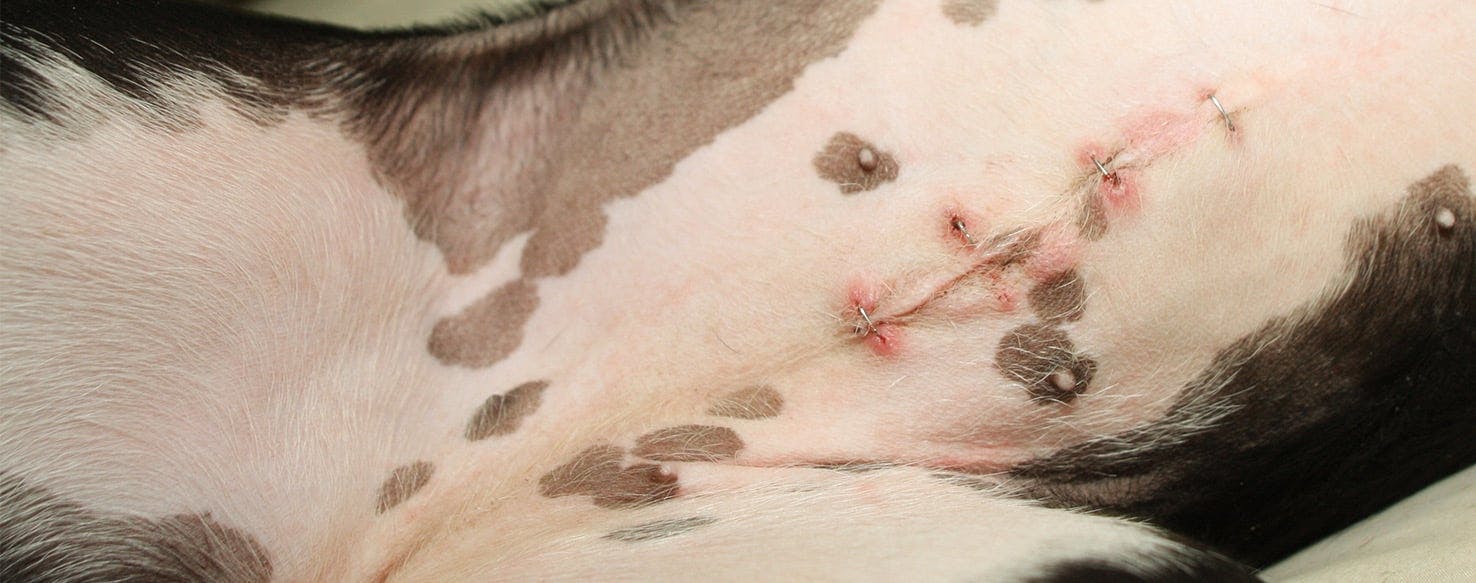Updated: 9/21/2021
Most dogs leap and bound around like they have an invincible bubble around them. Eventually, however, most dogs will suffer some sort of injury at a point in their life, even if it is minor. There is then a good chance that the injury may require stitches to close the wound. Stitches are fantastic-- they neatly sew up the skin, encouraging a swift recovery. However, if you do not care for your dog’s stitches properly, infections can quickly follow, some of which can spread throughout the body and even threaten the life of your dog. This article will offer practical steps you can take as an owner to help care for your canine friend’s stitches.
Limit your dog's exercise regimen
If your dog has stitches, they have probably suffered a somewhat serious injury and will need to lay low to recover. But just as importantly, the stitched area specifically needs rest to recover quickly too. So, if your dog has just had a surgical incision, they should not be allowed to run without a lead, and you should be aiming to keep exercise to a minimum for the first week or two. Avoid taking them on long walks and do not play in places where they might further damage and irritate the wound site.
By keeping your dog’s exercise to a minimum, you are allowing the skin to carefully heal and seal. Too much movement could not only loosen the stitches and increase the likelihood of infection, but it could also slow down the recovery process.
Prevent the dislodging of the stitches
There are also a number of other steps you should take to prevent the dislodging of stitches. Do not let the wound site get wet, that means strictly NO baths! A damp wound site can harbor and encourage the growth of bacteria and lead to more problems.
You should also prevent your dog from licking or itching the problem area, as they could cause an infection or pull out the stitches. That may mean you need to purchase an Elizabethan collar, which will effectively prevent your dog from licking and biting where the stitches have been placed.
Inspect the wound site
If the wound is not bandaged you will also need to regularly inspect the stitches to ensure they have not become dislodged and that there are no signs of infections or complications. So, if you see excessive pus or blood oozing from the wound, or you see serious swelling, then you may want to consult your local vet for guidance. In addition, a peculiar smell may be a sign that something is not right and medical attention should be sought. Be vigilant and inspect the wound site twice a day.
You also need to ensure you take your dog back to the vet to have the stitches removed if required. If they have non-dissolving skin stitches, stainless steel sutures, or stent sutures they will usually be removed after a week or two.
Points to remember
Stitches play a vital role in your dog’s recovery. If you care for them properly, your dog is more likely to recover quickly, free from infections and complications. That necessitates limiting their exercise for the first couple of weeks and preventing them from licking or itching the problem area, possibly with the assistance of an Elizabethan collar. Plus, it means regularly inspecting the stitches for signs of something amiss. The final step is taking your dog back to have the stitches removed as prescribed.


